Inferring clonal structure in HTLV-1-infected individuals: towards bridging the gap between analysis and visualization
- PMID: 28697807
- PMCID: PMC5505134
- DOI: 10.1186/s40246-017-0112-8
Inferring clonal structure in HTLV-1-infected individuals: towards bridging the gap between analysis and visualization
Abstract
Background: Human T cell leukemia virus type 1 (HTLV-1) causes adult T cell leukemia (ATL) in a proportion of infected individuals after a long latency period. Development of ATL is a multistep clonal process that can be investigated by monitoring the clonal expansion of HTLV-1-infected cells by isolation of provirus integration sites. The clonal composition (size, number, and combinations of clones) during the latency period in a given infected individual has not been clearly elucidated.
Methods: We used high-throughput sequencing technology coupled with a tag system for isolating integration sites and measuring clone sizes from 60 clinical samples. We assessed the role of clonality and clone size dynamics in ATL onset by modeling data from high-throughput monitoring of HTLV-1 integration sites using single- and multiple-time-point samples.
Results: From four size categories analyzed, we found that big clones (B; 513-2048 infected cells) and very big clones (VB; >2048 infected cells) had prognostic value. No sample harbored two or more VB clones or three or more B clones. We examined the role of clone size, clone combination, and the number of integration sites in the prognosis of infected individuals. We found a moderate reverse correlation between the total number of clones and the size of the largest clone. We devised a data-driven model that allows intuitive representation of clonal composition.
Conclusions: This integration site-based clonality tree model represents the complexity of clonality and provides a global view of clonality data that facilitates the analysis, interpretation, understanding, and visualization of the behavior of clones on inter- and intra-individual scales. It is fully data-driven, intuitively depicts the clonality patterns of HTLV-1-infected individuals and can assist in early risk assessment of ATL onset by reflecting the prognosis of infected individuals. This model should assist in assimilating information on clonal composition and understanding clonal expansion in HTLV-1-infected individuals.
Keywords: Adult T cell leukemia; Clonal expansion; Data-driven modeling; High-throughput sequencing; Human T cell leukemia virus type 1; Integration site; Prognostic indicator.
Conflict of interest statement
Competing interests
The authors declare that they have no competing interests.
Publisher’s Note
Springer Nature remains neutral with regard to jurisdictional claims in published maps and institutional affiliations.
Figures


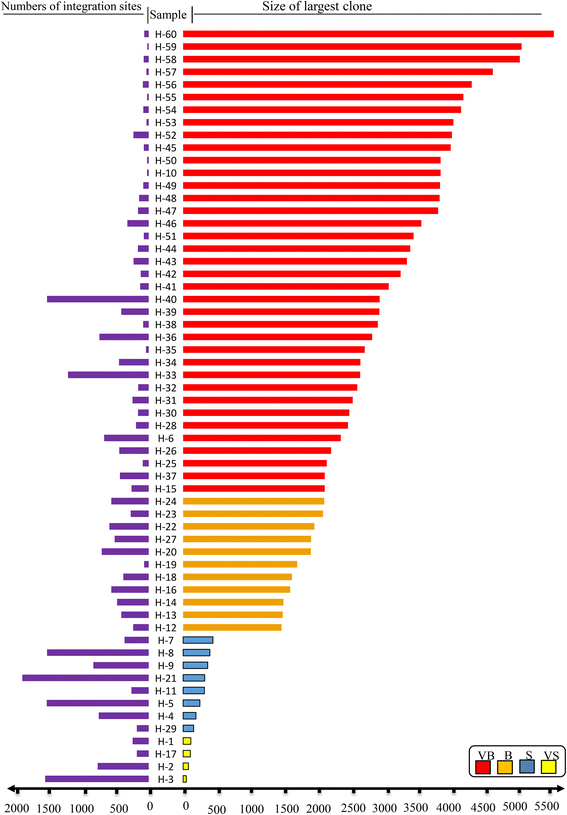
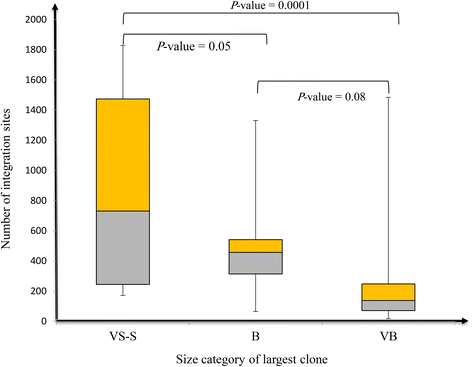
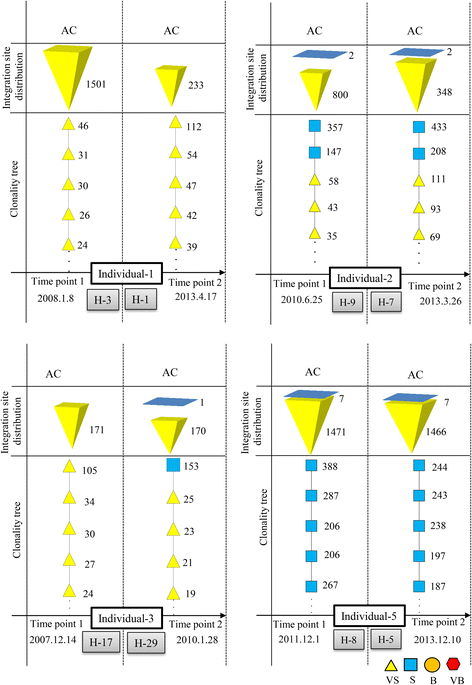
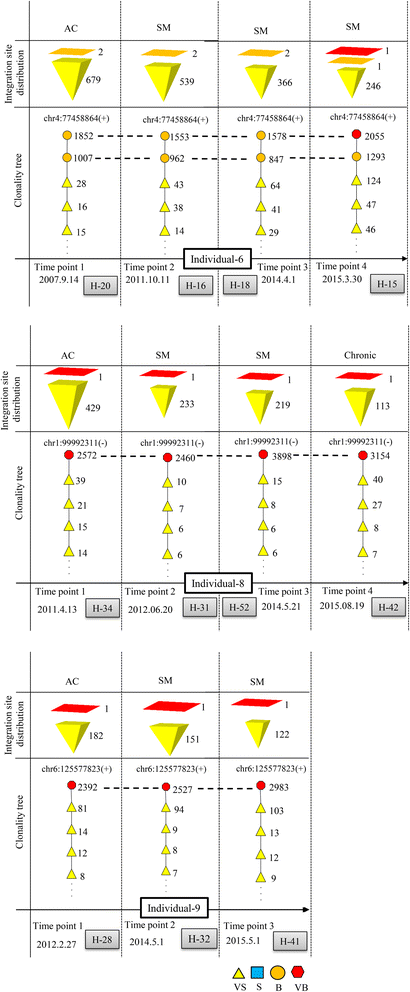
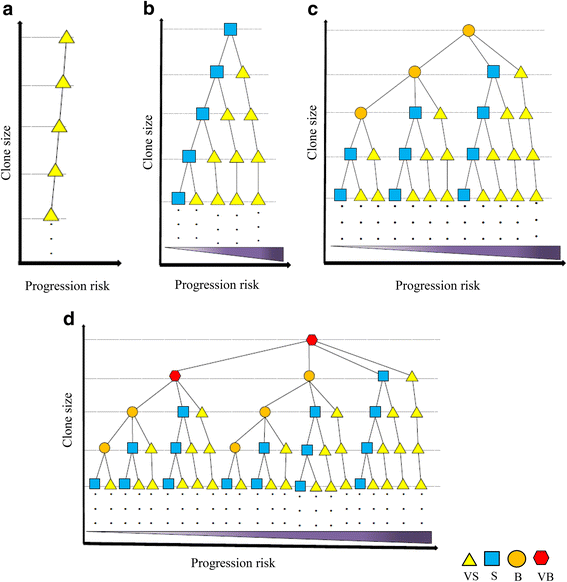
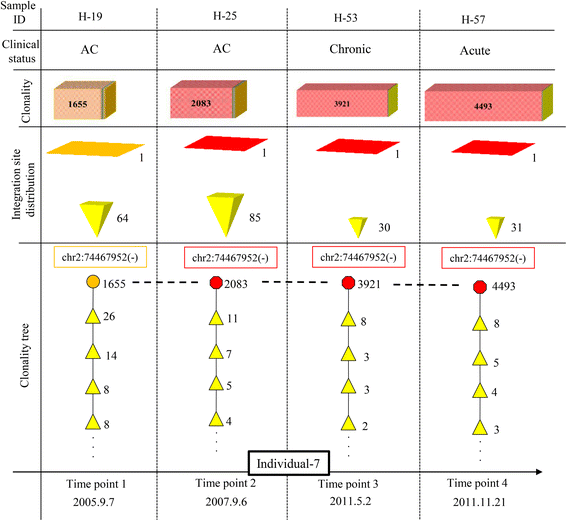
Similar articles
-
Multidisciplinary insight into clonal expansion of HTLV-1-infected cells in adult T-cell leukemia via modeling by deterministic finite automata coupled with high-throughput sequencing.BMC Med Genomics. 2017 Jan 31;10(1):4. doi: 10.1186/s12920-016-0241-2. BMC Med Genomics. 2017. PMID: 28137248 Free PMC article.
-
The role of HTLV-1 clonality, proviral structure, and genomic integration site in adult T-cell leukemia/lymphoma.Blood. 2014 Jun 19;123(25):3925-31. doi: 10.1182/blood-2014-02-553602. Epub 2014 Apr 15. Blood. 2014. PMID: 24735963 Free PMC article.
-
[Clonal expansion and genomic characterization of the human T-cell lymphotropic virus type I during the integration process in adult T-cell leukemia/lymphoma].Biomedica. 2009 Jun;29(2):218-31. Biomedica. 2009. PMID: 20128347 Spanish.
-
Clinical indications of multiple integrations of human T-cell lymphotropic virus type I proviral DNA in adult T-cell leukemia/lymphoma.Leuk Lymphoma. 1997 Sep;27(1-2):43-51. doi: 10.3109/10428199709068270. Leuk Lymphoma. 1997. PMID: 9373195 Review.
-
Adult T-cell leukemia: molecular basis for clonal expansion and transformation of HTLV-1-infected T cells.Blood. 2017 Mar 2;129(9):1071-1081. doi: 10.1182/blood-2016-09-692574. Epub 2017 Jan 23. Blood. 2017. PMID: 28115366 Free PMC article. Review.
Cited by
-
HTLV-1 infection: An emerging risk. Pathogenesis, epidemiology, diagnosis and associated diseases.Rev Esp Quimioter. 2019 Dec;32(6):485-496. Epub 2019 Oct 25. Rev Esp Quimioter. 2019. PMID: 31648512 Free PMC article. Review.
-
Circulating Virus-Host Chimera DNAs in the Clinical Monitoring of Virus-Related Cancers.Cancers (Basel). 2022 May 20;14(10):2531. doi: 10.3390/cancers14102531. Cancers (Basel). 2022. PMID: 35626135 Free PMC article. Review.
-
RNA sequencing identifies clonal structure of T-cell repertoires in patients with adult T-cell leukemia/lymphoma.NPJ Genom Med. 2019 May 6;4:10. doi: 10.1038/s41525-019-0084-9. eCollection 2019. NPJ Genom Med. 2019. PMID: 31069115 Free PMC article.
-
Mutational Intratumor Heterogeneity is a Complex and Early Event in the Development of Adult T-cell Leukemia/Lymphoma.Neoplasia. 2018 Sep;20(9):883-893. doi: 10.1016/j.neo.2018.07.001. Epub 2018 Jul 19. Neoplasia. 2018. PMID: 30032036 Free PMC article.
-
VISPA2: a scalable pipeline for high-throughput identification and annotation of vector integration sites.BMC Bioinformatics. 2017 Nov 25;18(1):520. doi: 10.1186/s12859-017-1937-9. BMC Bioinformatics. 2017. PMID: 29178837 Free PMC article.
References
-
- Greaves M. Evolutionary determinants of cancer. Cancer Discov. 2015;5:806–820. doi: 10.1158/2159-8290.CD-15-0439. - DOI - PMC - PubMed
Publication types
MeSH terms
Substances
LinkOut - more resources
Full Text Sources
Other Literature Sources
Miscellaneous

